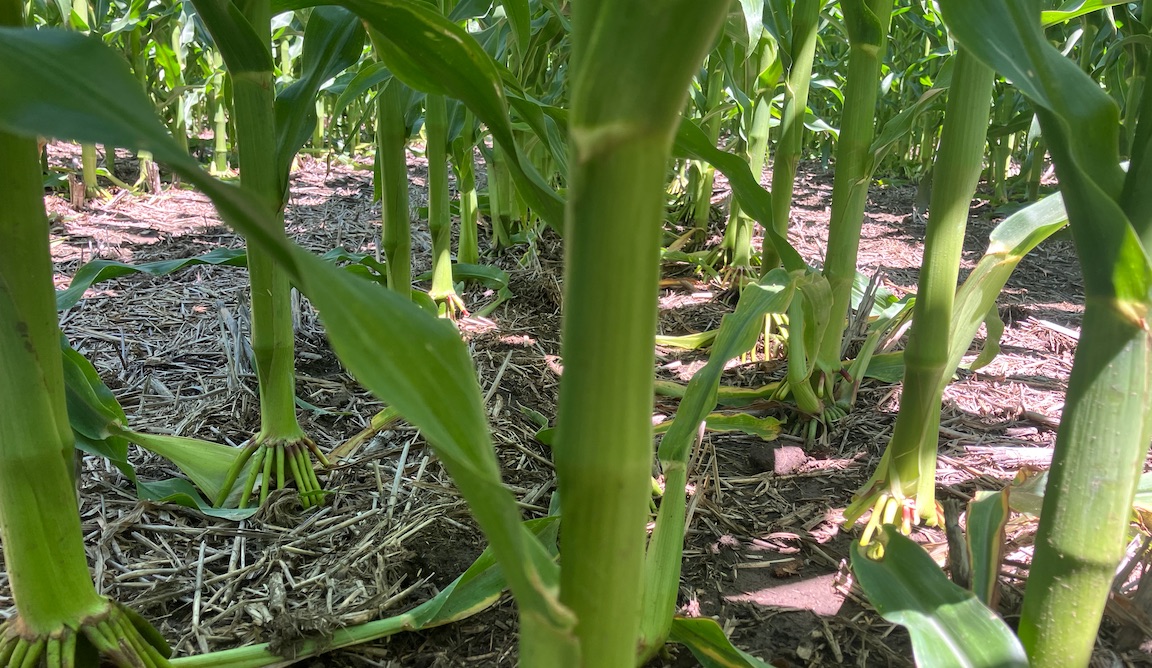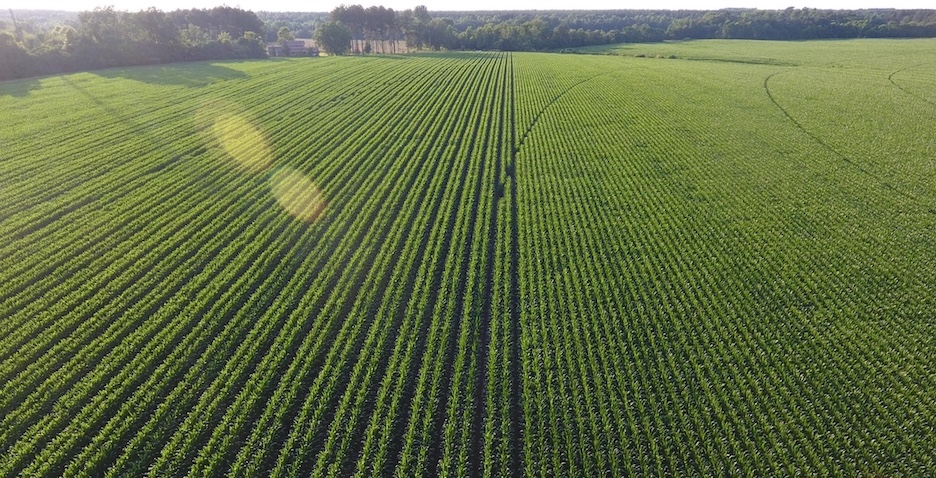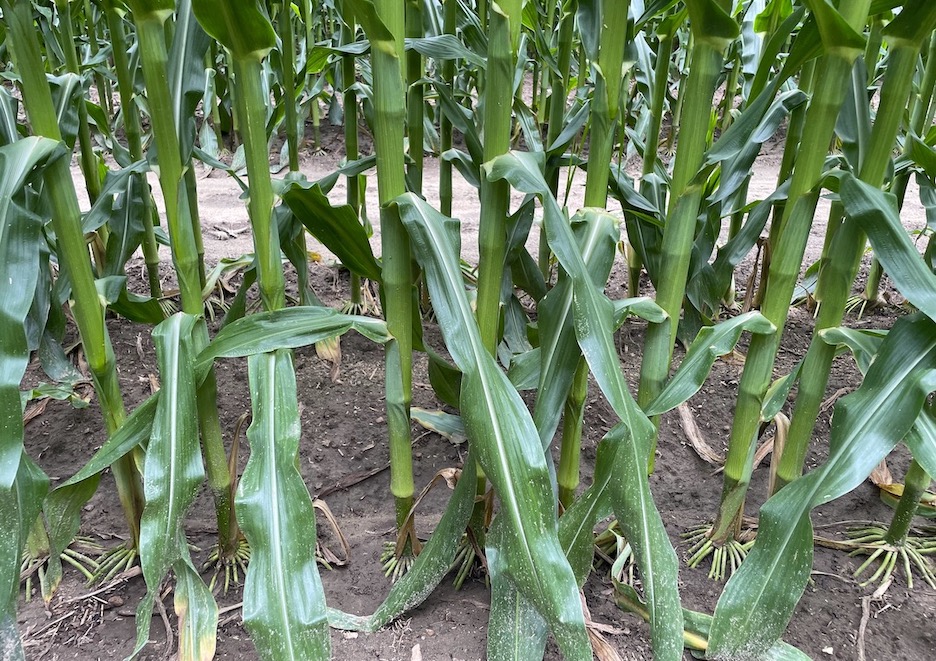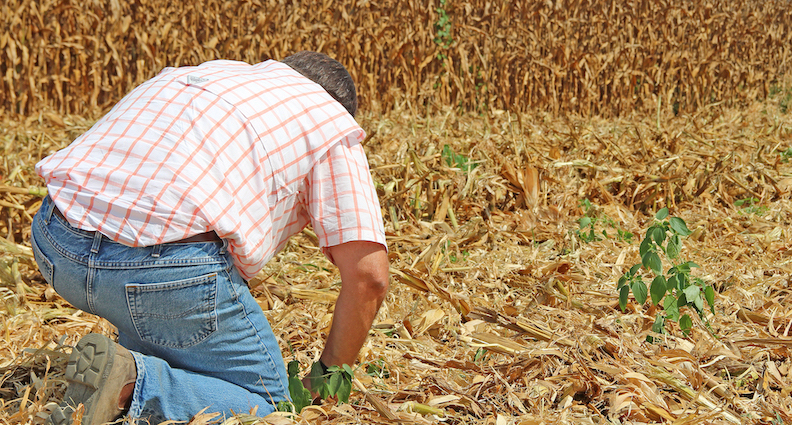How Did Cluster, Skip-Row, Triple Crop Corn Fare In 2023?

Failure is the price of success on the farm. In 2023, John Smith planted cluster corn in Kansas, James Hitchcock tried wide row corn in Georgia, and Bill Jones targeted a triple crop on his Indiana ground. How did each farmer fare?
Kansas Clusters
John Smith, 63, is not afraid to swing and miss. On mild hills in central Kansas, Smith grows corn, grain sorghum, soybeans and wheat on predominantly sandy ground. In 2023, on 17 acres, he planted three rows of corn in a 19" cluster, with 9.5" separating the outer rows from the center, and an additional 41" between each trio. (Read: Cluster Corn? Kansas Farmer Grows Triple-Row, Staggered Crop)

What was Smith’s strategy behind the configuration? His rows were directly over a water source — drip irrigation. The majority of Smith’s farmland is pivot-irrigated, but in 2017, he installed drip (25-year minimum lifespan system) on 137 acres, with lines 16" deep on 60" centers and emitters positioned every 24" along each line.
Row heights were staggered in Smith’s clusters. “For the left and right rows, I chose a variety a little shorter in height and a leaf that grows more horizontal to help shade the 41". Each center row is planted in a variety that is taller and grows upright leaves,” he says.

Into the season, Smith hit trouble: “I made learning curve mistakes at planting and ended up with a final population around 27,000. Then, the corn caught a bad, wind-driven hailstorm on July 16, and I also dealt with severe drought for several months.”
Smith considered cutting the cluster corn for silage. “Instead, I cut it normal, and it yielded in the 160-range — mainly due to my mistakes at planting.”
Lesson in-pocket, Smith is excited to take another stab: He will plant cluster corn in 2024. “I’m going to get the planting correct and focus on getting the middle row taller than the adjacent rows.”
“As a farmer, I take lessons from failure, and there is no better spot than my own ground for a learning opportunity,” he says. “I can’t wait for 2024, because I’m charged up to figure this out next year.”
Georgia Skips
Can skip-row corn add bushels to the bin? In 2023, James Hitchcock sought the answer from his own fields, growing skip-row 30" versus solid 30".

Hitchcock, 44, grows pivot-irrigated corn, peanuts and soybeans on roughly 3,000 acres in east-central Georgia’s Washington County. In 2023, Hitchcock took the wide-row plunge. (Read: Got Skip Row Corn? Georgia Farmers Goes 60" Wide)
On April 19, he planted 60"-row corn in two spots totaling 25 acres, surrounded by 255 acres of solid 30"-row corn. Split between two hybrids, the corn was planted at 36,000 seeds per acre in both the skip and solid rows.
“My normal planting pattern is 12 rows at 30" apart,” Hitchcock explains. “I have an electric planter, and for planting the skips, I turned off rows two, five, eight and 11.”

“I wanted to see if skip-row corn would release heat early in the season and have access to plenty of sunlight,” he continues. “The skip-row corn did handle a windstorm far better than the regular corn, but the yield differences were clear.”
At harvest (Aug. 23), Hitchcock averaged 301.7 bu. per acre (bpa) in solid 30s and 292.1 bpa in 60s on a DeKalb hybrid. An AgriGold hybrid showed a similar correlation: 295.3 bpa in 30s and 284.9 bpa in 60s.
“I didn’t get any yield benefits, but I learned some important things,” Hitchcock says. “I think if we band fertilizer just on the rows where we’re planting, centralized to where the roots will be, I think we’ll see a yield advantage, and that might be something I try.”
“All year round, my mind runs on ways to be a better steward by connecting less fertilizer, higher yields and ROI,” he adds. “I’m excited to try this again next spring because no two years are the same.”
Illinois Treble
Nonconformity is normal to Bill Jones, 61. In east-central Illinois’ Champaign and Vermillion counties, Jones grows dryland corn, food-grade corn for tortilla chips, peas, rye and soybeans. He has tried various triple crops since 2019: “I had never heard of anyone in my geography triple cropping, but why not find out for myself instead of relying on the crowd’s opinion?” (Read: Triple-Crop Soybean Success as Illinois Farmer Bucks Consensus)
However, in 2023, Jones was hamstrung by the drought throughout multiple Midwest states. Late rains saved his corn; beans were a different story.
“We tipped some 300-bu. corn and tipped some non-irrigated corn around 200, but soybeans suffered,” he says. “I had beans as low as 35 bu. per acre on my hilly ground. Seriously, it was the first time in my life I could walk a creek longways and not get my feet wet.”
Triple cropping was not an option, plainly evidenced by double crop trouble.
“I went beans after rye and got hammered by drought,” Jones explains. “Some of the beans didn’t even come up, and we plowed under the rest and used them for fertilizer to put rye back on.”
In fall 2023, Jones will plant 400 acres of rye. He aims to triple crop in summer 2024. “Right now, I’ve already got some rye up, and it's looking good. I’ll follow it with corn and chop late for silage or round bale it, and then follow with an 80-day pea.”
Expect Jones to adjust his triple crop plans: “Pencil it out and tweak accordingly,” he advises. “I can’t afford to not try something new because that is a key to learning every year.”
For more from Chris Bennett (cbennett@farmjournal.com or 662-592-1106), see:
While America Slept, China Stole the Farm
Priceless Pistol Found After Decades Lost in Farmhouse Attic
Cottonmouth Farmer: The Insane Tale of a Buck-Wild Scheme to Corner the Snake Venom Market
Tractorcade: How an Epic Convoy and Legendary Farmer Army Shook Washington, D.C.








